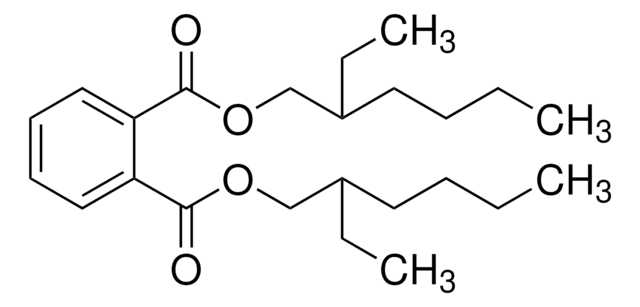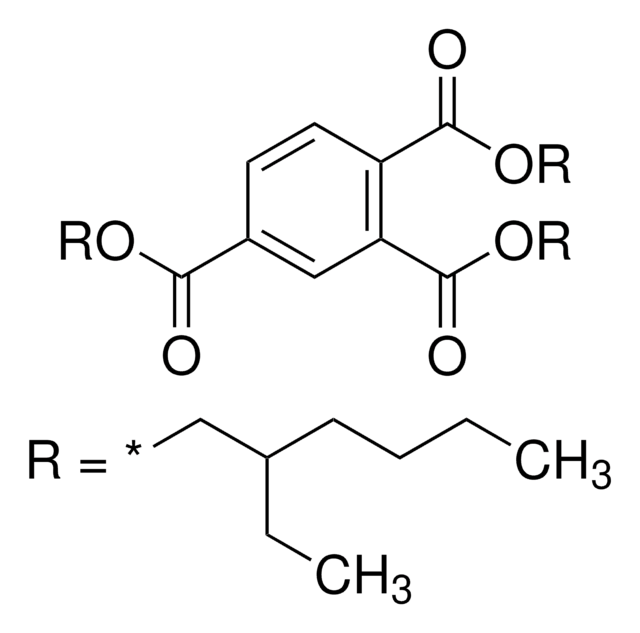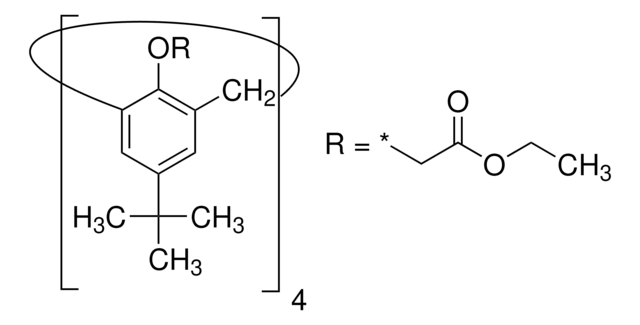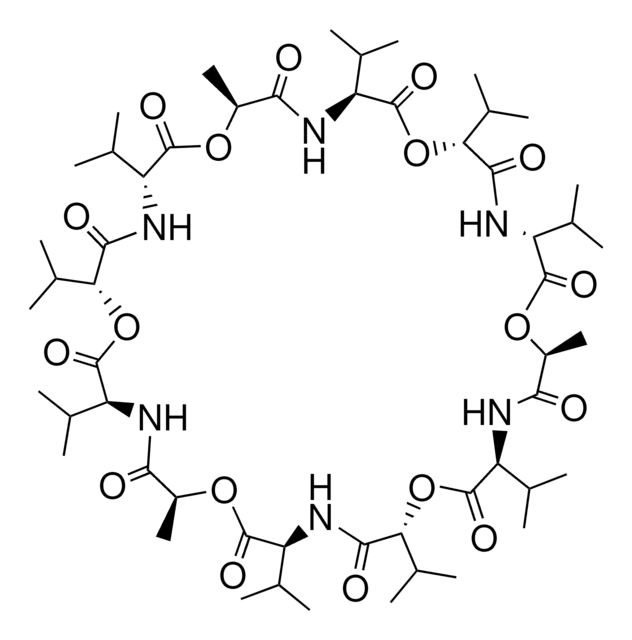84822
Bis(2-ethylhexyl) sebacate
≥97.0% (GC)
동의어(들):
Di(2-ethylhexyl) sebacate, Sebacic acid di(2-ethylhexyl) ester, ‘Dioctyl’ sebacate
로그인조직 및 계약 가격 보기
모든 사진(1)
About This Item
Linear Formula:
[-(CH2)4CO2CH2CH(C2H5)(CH2)3CH3]2
CAS Number:
Molecular Weight:
426.67
Beilstein:
1806504
EC Number:
MDL number:
UNSPSC 코드:
12352100
PubChem Substance ID:
NACRES:
NA.22
추천 제품
Quality Level
분석
≥97.0% (GC)
양식
liquid
refractive index
n20/D 1.450 (lit.)
bp
212 °C/1 mmHg (lit.)
density
0.914 g/mL at 25 °C (lit.)
작용기
ester
SMILES string
CCCCC(CC)COC(=O)CCCCCCCCC(=O)OCC(CC)CCCC
InChI
1S/C26H50O4/c1-5-9-17-23(7-3)21-29-25(27)19-15-13-11-12-14-16-20-26(28)30-22-24(8-4)18-10-6-2/h23-24H,5-22H2,1-4H3
InChI key
VJHINFRRDQUWOJ-UHFFFAOYSA-N
유사한 제품을 찾으십니까? 방문 제품 비교 안내
애플리케이션
Bis(2-ethylhexyl) sebacate is commonly used as a pressure transmitting fluid (PTF) in hydraulically operated devices, pressure measuring instruments and hydraulic pressure balances. It is also a plasticizing solvent mediator for preparing poly(vinyl chloride) (PVC) based membranes.
Storage Class Code
10 - Combustible liquids
WGK
awg
개인 보호 장비
Eyeshields, Gloves
이미 열람한 고객
Experimental density and viscosity measurements of di (2ethylhexyl) sebacate at high pressure.
Paredes X, et al.
The Journal of Chemical Thermodynamics, 44(1), 38-43 (2012)
Determination of complex formation constants of 18 neutral alkali and alkaline earth metal ionophores in poly (vinyl chloride) sensing membranes plasticized with bis (2-ethylhexyl) sebacate and o-nitrophenyloctylether.
Qin Y, et al.
Analytica Chimica Acta, 421(2), 207-220 (2000)
J Heyder et al.
Journal of applied physiology (Bethesda, Md. : 1985), 64(3), 1273-1278 (1988-03-01)
Convective gas mixing in the respiratory tract of 17 healthy male subjects was studied by an aerosol bolus technique. The monodisperse 1 micron di(2-ethylhexyl)sebacate droplets we used behaved as a nondiffusing gas. As the bolus was inspired to different depths
Guilherme J M Garcia et al.
Journal of aerosol medicine and pulmonary drug delivery, 22(2), 139-155 (2009-05-09)
Interindividual variability in nasal filtration is significant due to interindividual differences in nasal anatomy and breathing rate. Two important consequences arise from this variation among humans. First, devices for nasal drug delivery may furnish quite different doses in the nasal
J S Ilowite et al.
Archives of environmental health, 44(4), 267-273 (1989-07-01)
Mucociliary clearance was compared in three groups of normal subjects; each group inhaled a different type of aerosol (sebecate, iron oxide, and aqueous) labelled with 99Tc, to determine the relationship between deposition pattern and the subsequent total lung clearance. Standardization
자사의 과학자팀은 생명 과학, 재료 과학, 화학 합성, 크로마토그래피, 분석 및 기타 많은 영역을 포함한 모든 과학 분야에 경험이 있습니다..
고객지원팀으로 연락바랍니다.






![Sodium tetrakis[3,5-bis(trifluoromethyl)phenyl]borate Selectophore™](/deepweb/assets/sigmaaldrich/product/structures/251/439/7a621e74-bfd1-4a43-833c-09adfcc1e0b3/640/7a621e74-bfd1-4a43-833c-09adfcc1e0b3.png)


